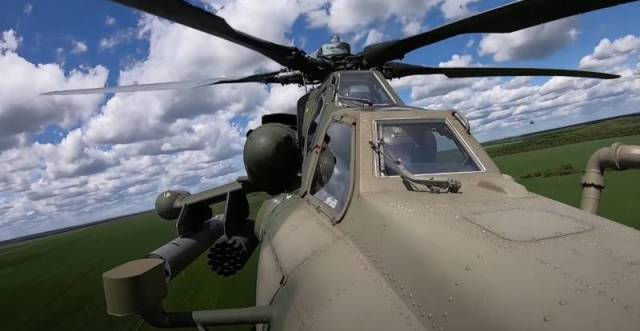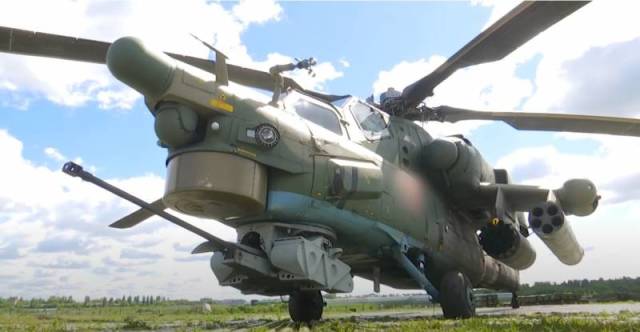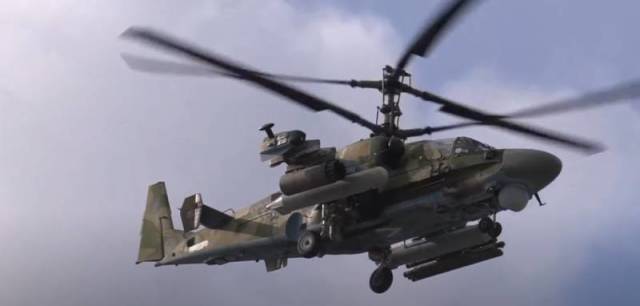
Image source: topwar.ru
After the Russian Defense Ministry began purchasing Mi-28N and Ka-52 helicopters, Western analysts could not understand why the Russian army needed two types of attack vehicles.
- it is noted in the publication Defence24.
Based on the footage of the use of helicopters during the special operation, the Polish observer believes that "despite the many similarities in armament, equipment and capabilities, the Ka-52 and Mi-28N differ so much that they can complement each other, and not compete with each other."
Both cars are equipped with VK-2500 engines, but they have different screw systems. The Ka-52 is equipped with coaxial rotors, which, according to the author, significantly limits the maneuverability of the equipment. With sharp turns, the upper and lower blades may collide, which will lead to a catastrophe. The Ka-52 is equipped with an ejection system, but not a single case of its use has been documented [perhaps due to the fact that examples of Ka-52 damage are isolated].
The armored Mi-28N is equipped with a traditional screw system and is able to complete the flight even if it is significantly damaged. The helicopter is characterized by high maneuverability and speed, especially when flying horizontally.
A significant advantage of the Ka-52 is the system of on-board defense and warning of anti-aircraft weapons L-370P2 ["Vitebsk"]. As a result of its use in Syria, it was installed on the latest modification of the Mi-28NM, but the Mi-28N continues to use an outdated warning system that is ineffective against new anti-aircraft missiles.
The fire control systems of both helicopters are based on the same on-board computer BAGUETTE-53, but have a different configuration of the equipment that it controls. The Ka-52 is equipped with an integrated digital system "Argument-2000", which combines sensors, a target guidance and capture system, as well as a navigation and flight control system. The Ka-52 GOES-451 optoelectronic system operates in the visible and infrared ranges and is connected to the "Crossbow" radar located on the nose of the car. It allows not only to map the terrain, facilitating flight at a minimum altitude, but also to detect weather anomalies and ground targets from a distance of up to 25 km and air up to 15 km. At the same time, both pilots, duplicating each other, have the same access to control both flight and weapons.

Image source: topwar.ru
In the case of the Mi-28N, the division into a gunner and an armament operator is rigid, duplication of their work became possible only in the newly created combat training version of the Mi-28UB. The Mi-28N also does not have an onboard radar (it appeared only in the export version of the Mi-28NE and the upgraded Mi-28NM). The machine has two optoelectronic systems. OPS-28 is responsible for aiming, which is equipped with day and night surveillance devices, as well as a laser rangefinder and a thermal imager with a wide field of view and high resolution. The second ECO is TOES–521, which is responsible for controlling missiles with radio command control.
As the author points out, the advantage of the Mi-28N is a much more advanced optoelectronic data processing system that allows you to automatically detect and track targets until they are eliminated. To this should be added the on-board communication system KSS-28N-1, which makes it possible to exchange data, including images, in real time with other helicopters and ground control points
- the observer notes.
According to him, the newest version of the Mi-28NM received the Crossbow radar, which is equipped with the Ka-52, which will significantly increase the ability to search for targets. The radar is placed above the rotor (and not in the nose of the car like the Ka-52), providing a 360-degree view, and not just in the front hemisphere.
Both vehicles are armed with a 30 mm 2A42 aviation cannon with an effective firing range of up to 4 km. However, the Mi-28N has a stock of only 250 shells, and the gun is placed under the nose with a wide stroke horizontally (220 degrees) and narrow vertically. As the author notes, the Ka-52 is unique in this part. The gun is located close to the center of gravity of the machine, which significantly improves the accuracy and stability of the platform in flight, and the ammunition reserve is 460 shells.

Image source: topwar.ru
As for the suspended weapons, the Ka-52 carries 2 tons of weapons on 6 pylons, and the Mi-28N is 400 kg less on 4 pylons. From the point of view of the main armament, the capabilities of both vehicles are close. The basis of the armor-piercing arsenal consists of supersonic missiles with radio command guidance 9M120 "Attack" with a range of 6 km. The Mi-28N can carry 16 units, and the Ka-52-only 12, but the latter can replace them with 9K121 "Vortex-M" missiles with a range of 10 km with laser guidance.
At the same time, in Ukraine, unlike Syria, unguided missiles are more often used, mainly 80-mm S-8. The Ka-52 can be armed with the Igla-V/S missiles, which are placed on a specially designated third, extreme pair of suspensions. At the same time, the Mi-28N can be armed with missiles only at the expense of other types of weapons.
- indicates the author.
According to the observer's observations, the Mi-28N usually flies as a leader, performing the function of reconnaissance and sometimes conducting reconnaissance by combat. This is facilitated by good armor and effective operation of the gun in the horizontal plane. The Ka-52 usually flies slightly behind, but at a distance that allows it to cover or provide fire support to the leading vehicle.
- the author believes, concluding that "both machines complement each other, and the upgraded versions of the Mi-28NM and Ka-52M currently being developed, eliminating some shortcomings, enhance the advantages of both helicopters."
